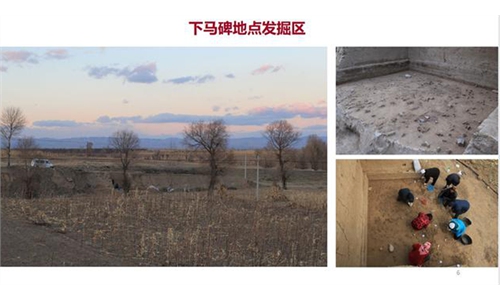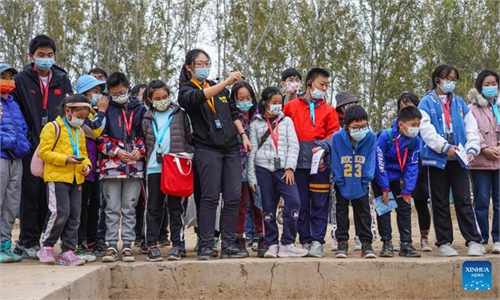Editor's Note:
Chinese President Xi Jinping recently stressed the importance of furthering the study of Chinese civilization to enhance the historical awareness and cultural confidence of the Communist Party of China (CPC) and society, while unswervingly following the path of socialism with Chinese characteristics to realize national rejuvenation. Xi also remarked on a national research program dedicated to tracing the origins of Chinese civilization.
Be it experts or archaeology lovers, exploring the rich history and culture of China is an interesting journey. This vast land gave birth to the Chinese civilization that we know today, but more importantly it established exchanges and mutual learning with various civilizations outside the nation starting thousands of years ago.
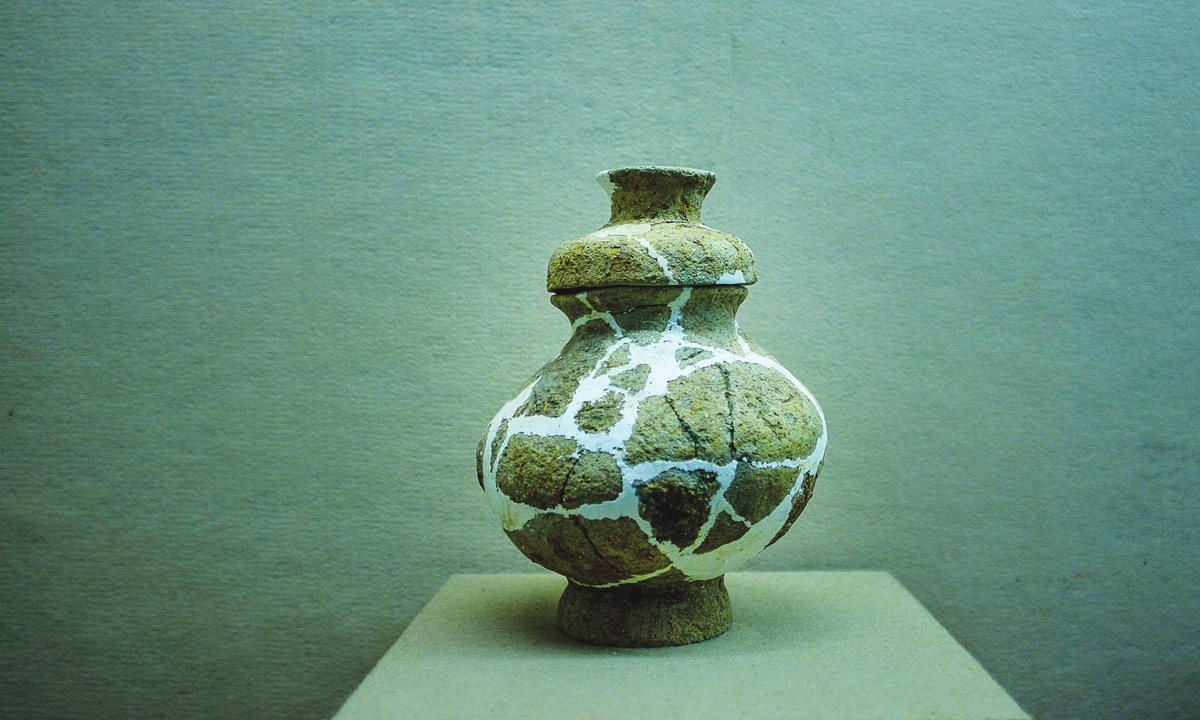
A pottery jar found in the Mabaren Ruins in Guangdong Province Photo: VCG
Lingnan culture, also known as Cantonese culture, is a significant constituent part of Chinese civilization. Encompassing the provinces of Guangdong and Hainan and South China's Guangxi Zhuang Autonomous Region, this culture has enriched various aspects of Chinese civilization with its unique features, according to Chinese archaeologist Su Bingqi.
Lingnan culture converged with the Chinese cultures of the Central Plains during the Qin (221BC- 206BC) and Han (206BC-AD220) dynasties, Zhou Xueying, a history professor at Nanjing University, told the Global Times on Tuesday.
Zhou noted that this cultural convergence can be seen from similarities in customs and rituals between Lingnan culture and the Chinese dynasties based in the Central Plains.
Besides ties to Central Plains culture, Zhou underlined that the Lingnan culture is an "open window" on Chinese civilization. It exemplifies the China-West cultural exchanges that have taken place ever since ancient times.
"The architectural relics discovered in the Tomb of King Nanyue of the Western Han Dynasty (206BC-AD25) is once such example as much of its design was inspired by Central Asian aesthetics."
As Zhou noted, Lingnan culture shows the comprehensiveness of Chinese civilization.
"You can see traces of other cultures, such as Indian culture, the cultures of West Asia, and even ancient Roman culture in China's Lingnan culture," Zhou said.
Wang Wei, chief expert of the National Research Program into the Origin of Chinese Civilization, told the Global Times on Tuesday that Lingnan culture was deeply influenced by cultures along the middle reaches of the Yangtze River.
The culture of the Central Plains spread south to the Yangtze River region and then continued to spread to the Lingnan region after combining with local cultural features. Wang noted that agricultural technology and spiritual beliefs such as the use of certain totems demonstrate this influence.
"The unique features and exchanges with other regions seen in Lingnan culture reflect the pattern of unity in diversity that we can see throughout the history of Chinese civilization," Wang noted.
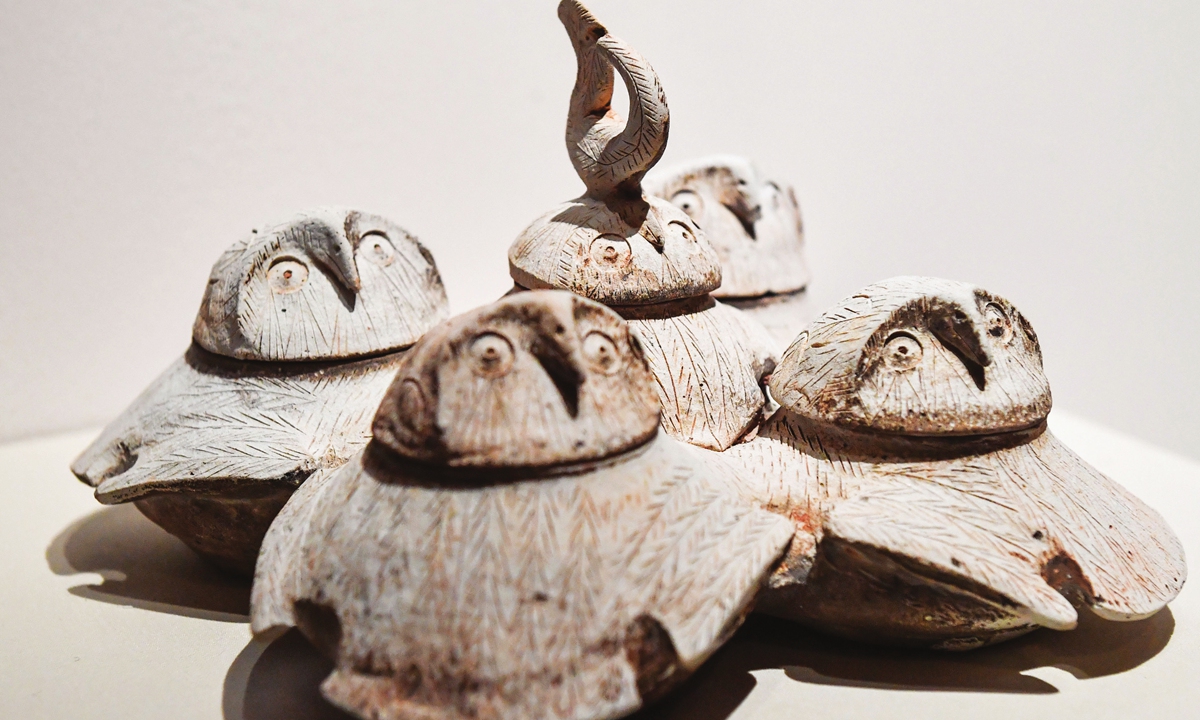
Owl-shaped pottery jars found in Guangzhou, Guangdong Province Photo: IC
Timeline: evolution of Lingnan culture
10,000 - 7,000 years ago
Important archeological discoveries in Guangdong Province in recent years have demonstrated how the roots of today's Lingnan culture stretches back to the dawn of Chinese civilization.
The Xiantou Ling Culture, which dates back to 7,000 years ago, was discovered around the estuary of the Pearl River. White and colored pottery wares were excavated from the site. These relics reveal influences of ancient cultures along the middle reaches of the Yangtze River.
6,000 - 5,000 years ago
The Guye Ruins in Guangdong Province are another representative of Lingnan culture. Numerous stone, wood and shell tools, as well as 20 fossilized grains of rice still in their husks were excavated at the site. These discoveries show influences from the ancient Liangzhu culture located along the lower reaches of the Yangtze River.
5,000 years ago
The Shixia Ruins near Shaoguan in Guangdong Province show even more profound influence from the Liangzhu Culture.
In Hong Kong, some prehistoric ruins, such as the Sha Ha Ruins in the Sai Kung district, have produced pottery wares similar to those of the early Liangzhu Culture. Some pottery wares influenced by the Songze Culture near Shanghai were also excavated in coastal zones in the Lingnan region.
5,000 - 4,700 years ago
Fired pottery wares with geometric patterns were discovered at the Hengling Ruin Site in Guangzhou, contributing greatly to research on Lingnan culture's influence in the northern regions of China.
4,000 years ago
Pottery wares with geometric patterns spread north, entering East China's Jiangxi Province, the southern parts of Zhejiang Province and the northern region of Fujian Province. This demonstrates how Lingnan culture established mutual exchanges with civilizations along the Yangtze River during ancient times.
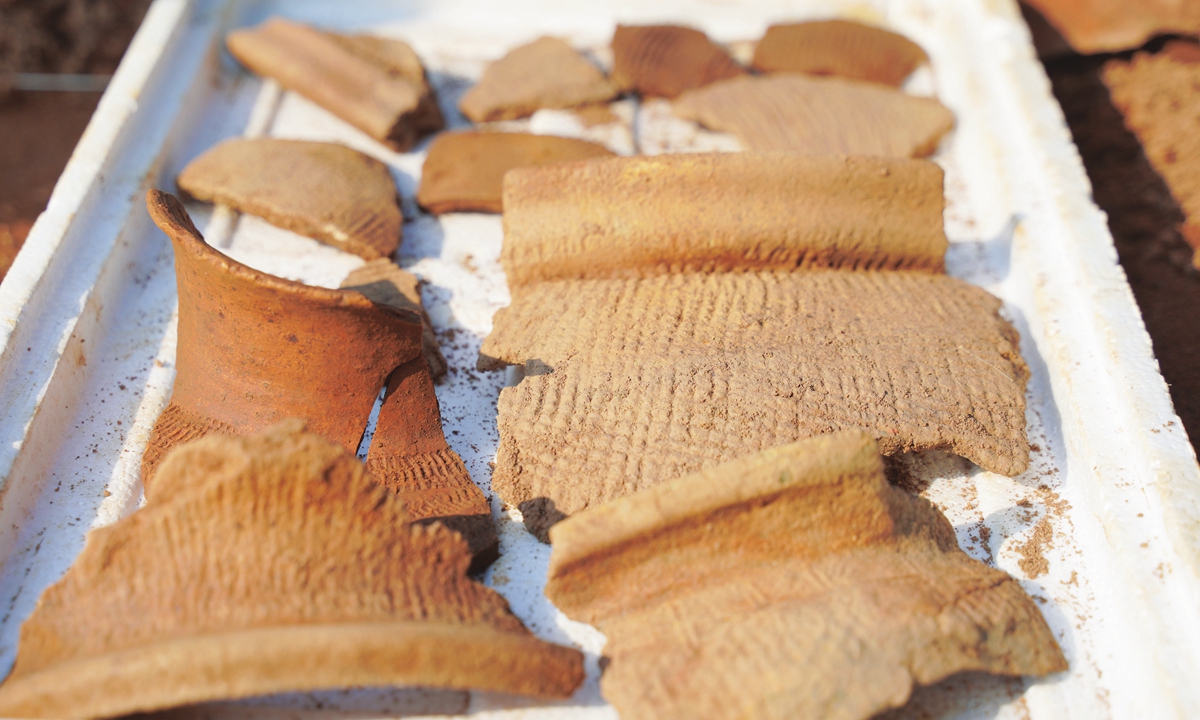
Pottery relics found in Dongguan, Guangdong Province Photo: VCG

